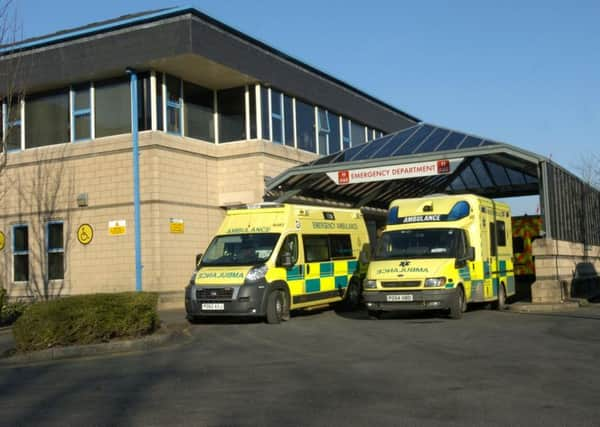1,303 patients left A & E before being treated


A leading expert has expressed concern that hundreds of thousands of patients across England may be coming to harm as a result of leaving hospital prematurely.
Patients who attend A&E are assigned an outcome based on how their visit ended – for instance, whether they were admitted, referred to a specific clinic, or died.
Advertisement
Hide AdAdvertisement
Hide AdNHS Digital figures show that 1,303 patients were recorded as having left A&E without being seen by medical staff at the University Hospital Of Morecambe Bay NHS Foundation Trust in the 12 months to May .
They joined 307,700 others across England who also left hospital before being assessed or treated.
Dr Nick Scriven, president of the Society for Acute Medicine, said it was a “major concern to see so many people essentially giving up and leaving”.
He added: “The optimistic version is that these people probably did not need emergency care and, when faced with the reality of a long wait, reconsidered.
Advertisement
Hide AdAdvertisement
Hide Ad“The alternative is that they were in need but potentially could have come to harm by leaving unseen.”
The number of people who leave without being seen is one of five quality measures used to monitor the performance of A&E departments each month.
During May, the latest month with available data, 1.9% of patients across England left without being seen.
This was an improvement on the same month two years ago, when it was 3.3%.
Advertisement
Hide AdAdvertisement
Hide AdThe rate for people leaving without being seen has worsened in University Hospital Of Morecambe Bay NHS Foundation Trust.
Last May, it stood at 4.3%, up from 2.8% in 2017.
The average across 2018-19 was 1.1%.
However, the figures exclude patients who have an unknown outcome, because staff did not record it.
Of the 1.7 million people who attended an A&E department in England in May, 13% had an unknown outcome – up from just 1% in 2017.
Dr Scriven said it was concerning to not know what outcomes so many patients had faced.
Advertisement
Hide AdAdvertisement
Hide AdAn NHS spokesman said the proportion of patients leaving without being seen had improved in recent years, despite an increase in an increase in visits to A&E.
He added: “This improvement comes as more people than ever are making use of the NHS 111 phone and online service, which has prevented more than 12 million unnecessary trips to A&E since 2011, by providing people with fast and free advice on more appropriate and convenient options.”
Foluke Ajayi, Chief Operating Officer for University Hospitals of Morecambe Bay NHS Foundation
Trust (UHMBT), said: “All patients are triaged when they arrive at our Emergency Department (ED) at the Royal Infirmary, usually within 15 minutes (93.7% within 15 minutes in July 2019).
Advertisement
Hide AdAdvertisement
Hide Ad“People with life-threatening and serious illnesses or injuries will be prioritized while people with less urgent health concerns may have to wait to be seen. Everyone who attends the ED will be seen as promptly as possible and we are grateful to patients who kindly wait while the most
serious and life-threatening cases are dealt with.
“At the RLI waiting times for people with non-urgent illnesses or injuries are advertised on an electronic screen outside the ED and they are also on our Trust website. Sometimes non-urgent patients do not wish to wait, perhaps planning to seek alternative care elsewhere or to come back later. The Trust does not routinely follow up these patients, however we do inform the relevant GP that their patient had attended but left without treatment.
“We are constantly working on initiatives such as our real-time analytics system which is helping staff to improve waiting times, patient management, care and experience. Our new ‘Analytic Command Centre’ has been designed to work in a similar way to airport air traffic control and displays live information about patients throughout their hospital stay, from incoming patients travelling via ambulance to patients waiting for discharge home.
“We hold patient flow meetings every two hours in the Analytic Command Centre which helps teams to assess the emergency care setting and patient flow in and out of the hospital. The new screens show live details of performance in the ED which enables staff to see the status of ambulances, the number of walk-ins and if there has been a surge in patients.
Advertisement
Hide AdAdvertisement
Hide Ad“Members of the public can also help us by only using our ED if they have a serious or life-threatening injury or illness. There is a range of local health services available to people when they feel unwell, including self-care, pharmacies and the NHS 111 advice service.”